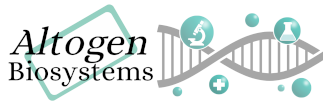Shop Products
CRISPR/Cas9: Transfection Application
What is CRISPR?
CRISPR, which stands for Clustered Regularly Interspersed Short Palindromic Repeats, refers to a set of DNA sequences in bacteria acquired from viruses that help the bacteria destroy viral DNA. The short sequences, as their name suggests, are palindromic, and are paired with the Cas9 endonuclease to cut apart foreign DNA if a bacteria is attacked by a virus. The CRISPR/Cas9 system can be modified for genetic modification purposes by selecting the specific segment of double-stranded DNA that is targeted by the Cas9 protein. If a gene-knockout is desired, then the Cas9 protein can be used to cut double-stranded DNA at two locations, after which the cell’s non-homologous end joining (NHEJ) DNA-repairing mechanism results in the elimination of the target gene from the DNA. Adding sequences to double-stranded DNA is also possible by having the Cas9 cleave a single strand of DNA at two locations. The additionally introduced sequence is designed so that it overlaps the sticky ends of the cleavage, and the cell’s homology-directed repair (HDR) mechanism will incorporate the sequence into the double-stranded DNA.
Structure of the CRISPR/Cas9 complex
The CRISPR/Cas9 system cuts DNA at points determined by a sequence that is attached to the Cas9 protein. This sequence, called crRNA, can be chosen in a laboratory setting and modified to fit specific needs. crRNA is connected to the Cas9 protein by tracrRNA, and may be combined with tracrRNA to form sgRNA (single guide RNA). A repair template may also be introduced to guide a cell’s DNA repair mechanism and introduce a specific gene into its DNA. The Cas9 protein is connected to a short, unmodifiable PAM (protospacer adjacent motif) sequence that determines the location at which Cas9 cleaves DNA. The PAM sequence can usually be found every ten or so base pairs in a DNA strand, but nonetheless sgRNA and repair templates must be designed to accommodate for the specific PAM sequence.
Applications in Transfection
Delivering the CRISPR/Cas9 into a cell is most efficiently done with viruses, but may also be accomplished through plasmid-delivery and lipofection. Cationic lipid-based delivery of the Cas9 protein with attached sgRNA has also been shown to be effective in delivering the protein complex into a cell. Altogen has developed reagent kits to aid in the process of both delivering and constructing a desired CRISPR/Cas9 complex. Purified reagents are used to structure sgRNA with a desired sequence, after which it is connected to the Cas9 protein and encapsulated in a lipid bilayer. The resulting transfection complex is then introduced into cells and results in either the removal of the targeted gene or the addition of a gene if desired.
In Vivo Transfection Reagents from Altogen Biosystems
RNAi has been used for in vivo target validation studies using animal models. The major challenge in performing RNAi studies in vivo is the effective, directed delivery of functional small RNA molecules into specific tissues. Altogen® In Vivo Transfection Reagents could be conjugated with siRNA (or microRNA) and administered intratumorally (i.t) or systemically via intravenous (i.v) tail vein injection in order to provide directed gene silencing in specific tissues, including liver, pancreas, kidney, and tumors. Selective knockdown could be seen as early as 24 hours after injection.
What is CRISPR
CRISPR (Clustered Regularly Interspaced Short Palindromic Repeats) is a powerful genome editing tool that enables precise manipulation of DNA sequences in living organisms. The CRISPR technology allows for targeted changes to be made to the DNA sequence, enabling researchers to modify or delete specific genes or genomic regions.
CRISPR works by using a specific RNA molecule, called guide RNA (gRNA), that is designed to recognize a specific DNA sequence of interest. When the gRNA binds to its complementary DNA target, it recruits an enzyme called Cas9, which cuts the DNA at the targeted location. This can then be followed by the insertion, deletion, or replacement of DNA sequence at the site of the cut.
CRISPR technology has revolutionized the field of genetics and molecular biology, and has many applications in research, medicine, and biotechnology. For example, it can be used to study gene function and the mechanisms of diseases, develop new therapies for genetic disorders, and improve crops and livestock.
However, CRISPR technology also raises ethical and safety concerns, particularly related to the potential for off-target effects, unintended consequences, and the possibility of using the technology for genetic engineering in humans. There are ongoing efforts to address these concerns and to develop safe and responsible use of CRISPR technology.
Featured in vivo transfection products from Altogen Biosystems:
In Vivo Nanoparticle Transfection Kit || In Vivo PEG-Liposome Transfection Kit || In Vivo Lipid Transfection Kit || In Vivo Polymer Transfection Kit || In Vivo Pancreas-targeted Transfection Kit
Altogen Labs provides preclinical research services, including over 90 validated xenograft models, development of stable cell lines, RNAi services, ELISA and Western Blot services, siRNA library screening and transfection services.




